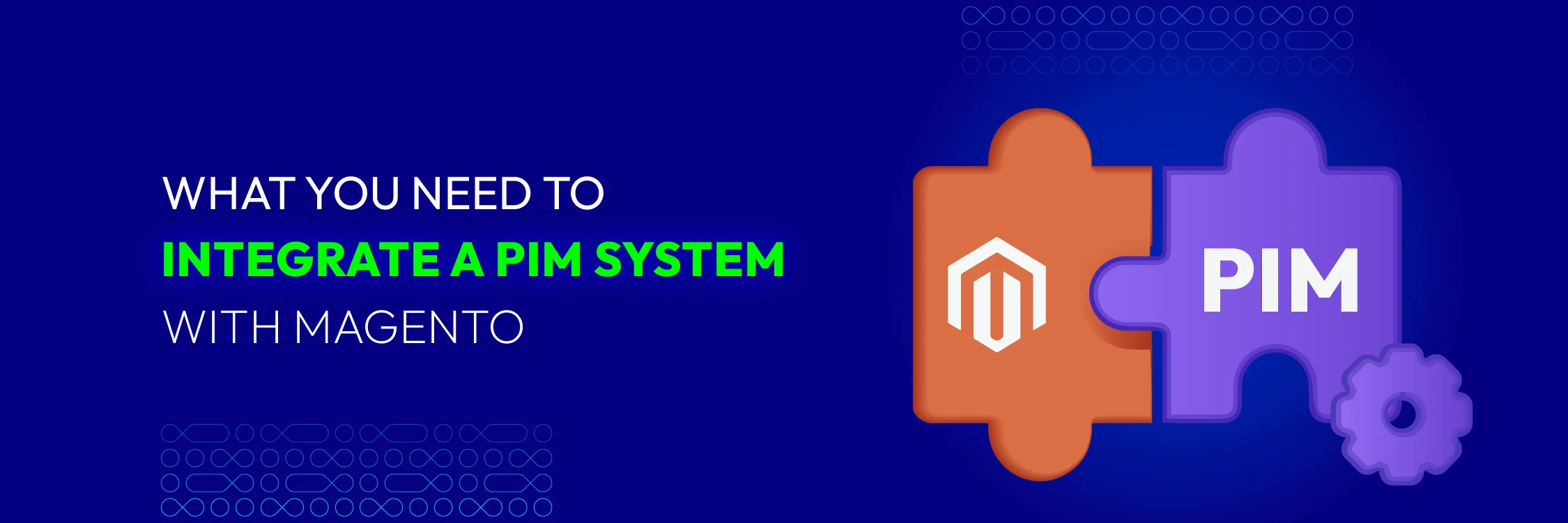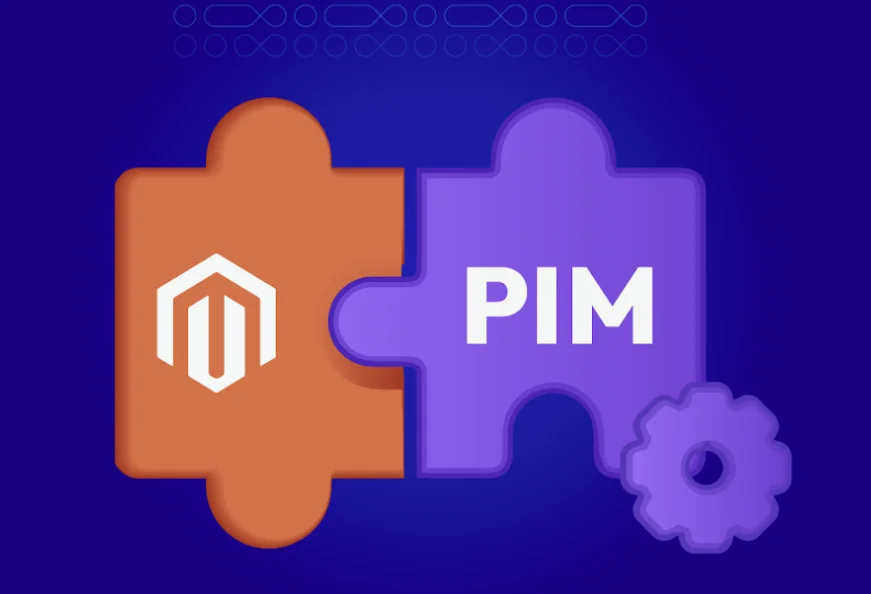What You Need to Integrate a PIM System with Magento

Magento is one of the world’s leading open-source platforms, renowned for its powerful and comprehensive features tailored for businesses. This platform is widely used by both large and medium-sized enterprises globally to build and operate professional online stores.
However, Magento faces challenges in updating all product data in a centralized repository, which is why we need PIM (Product Information Management).
In this article, we will explore why your Magento online store needs a PIM solution, the benefits of PIM, and what you need to integrate a PIM system with Magento.
Let’s dive in!
Why Integrate a PIM System with Magento?
Magento helps store online businesses and manage product databases, but updating product data in a single central repository is a common issue.

This is where PIM (Product Information Management) comes in. PIM is an automation tool that enables businesses to manage product data by collecting it into a single repository, which can then distribute rich data across various channels such as online stores, marketplaces, brand websites, design systems, and supply networks.
PIM helps manage product information efficiently and consistently. Therefore, integrating a PIM system with Magento ensures that all product information on your online store is always up-to-date and accurate, saving time, and costs, creating an ideal customer experience.
PIM comes with a pre-configured Magento connector to ensure seamless deployment across the system. With a cloud-based PIM system, you can connect from anywhere using any device, allowing you to provide PIM access to all your Magento users. Thus, integrating the right software is essential to ensure a successful connection.
Advantages of Integrating a PIM System
After integration, you’ll notice that the system offers super-fast product data updates, saving you a lot of time, costs, and resources compared to manual management.
The benefits of integrating a PIM system with Magento are numerous and include:
-
Improved Product Management: PIM systems make it easy to manage and update product information, including descriptions, prices, images, and other details.
-
Enhanced Operational Efficiency: Integration with PIM automates many processes, reduces manual tasks, and increases operational efficiency.
-
Improved Data Quality: PIM ensures that product data is always accurate, consistent, and complete, enhancing the shopping experience for customers.
-
Boosted Marketing and Sales: With detailed and constantly updated product information, you can create effective marketing campaigns and attract potential customers.
How to choose the best PIM for Magento integration
PIM helps businesses manage, organize, and distribute product information efficiently. Choosing the right PIM system to integrate with Magento not only improves product management efficiency but also enhances the customer shopping experience.

Read the 5 factors below to choose the best PIM for Magento integration, helping your business grow:
1. Understand your business needs
Before selecting a PIM, it is crucial to identify the specific needs of your business. Consider factors such as product scale, sales channels, and the team that will use the PIM system, as well as the features they require to work effectively.
This will help you lay the groundwork for making the most accurate decision when choosing a PIM.
2. PIM integration features
Ensure that the PIM system you choose integrates seamlessly with Magento. Some integration features to consider include:
-
Easy management and updating of product information on Magento
-
PIM should support integration with other sales channels beyond Magento to ensure consistent product information across all platforms.
3. Evaluate flexibility and scalability
To meet the development needs of the business, the PIM system needs to be flexible and scalable. Therefore, PIM should ensure:
-
Flexibility to allow customization according to the specific requirements of the business
-
Scalability to handle a larger volume of products as the business grows
-
The ability to integrate with other systems like ERP, CRM, and other e-commerce platforms
4. User experience and technical support
To enhance the user experience, the system must be easy to use and have a user-friendly interface. Additionally, ensure that the PIM provider offers reliable technical support and comprehensive documentation.
5. Cost
Finally, cost is an essential factor to consider. Evaluate the initial setup cost, monthly or annual maintenance fees, and any other additional costs. Ensure that the PIM system you choose provides the best value for your investment.
What You Need to Integrate a PIM System with Magento
To integrate a PIM system with the Magento e-commerce platform, you need to prepare several key elements. Below are some prerequisites you need to ensure a smooth and effective integration process:
-
Professional Magento Expertise: At least one professional Magento expert along with a development team experienced with both systems is necessary for seamless integration. They need to be proficient in programming, database management, and API handling.
-
Suitable PIM System: Choose a PIM system that fits your business needs and ensure that your Magento version is compatible with PIM integration. Both Magento Commerce and Magento Open Source versions can be integrated with PIM, but verify if your current version meets the integration requirements.
-
Data Organization: Check and ensure that the data in your PIM system is well-organized and can synchronize with Magento. This includes verifying data consistency and format, and ensuring product attributes and categories are compatible.
-
Data Backup: Before starting the integration, back up all data and configurations of both systems to prevent any potential issues.
-
Training and Support: Conduct training sessions immediately after the integration is complete to ensure that your team can effectively utilize the system. Provide manuals and technical support as needed.
Integrating a PIM system with Magento requires thorough preparation and in-depth knowledge of both platforms. By applying the steps outlined above, you will ensure a smooth integration process, thereby maximizing the benefits for your business operations.
Conclusion
Integrating a PIM system with Magento offers numerous benefits for businesses, helping to manage product information more effectively, improve customer experience, and enhance business efficiency.
We hope this article has provided you with a better understanding of the importance and the necessary preparations for integrating a PIM system with Magento.
If you encounter any difficulties during the process, do not hesitate to contact us for expert Magento Integration Services. Our team ensures a seamless PIM-Magento integration tailored to your needs. Get Started Today!
FAQs
1. How to ensure security when integrating a PIM system with Magento?
Implement security measures such as data encryption, access management, and compliance with information security standards.
2. Is deep technical knowledge necessary before integrating a PIM system with Magento?
It’s not mandatory, but basic understanding of data structure and Magento workflow will facilitate a smoother integration process.
3. How to minimize risks during the integration of a PIM system with Magento?
Conduct thorough testing, ensure team members are well-trained, and have a data backup plan in place.
4. How to measure the effectiveness of integrating a PIM system with Magento?
Evaluate based on metrics such as revenue growth, improved speed to market for products, and reduced errors in product management.





![Top 20+ Must-have Shopify Apps for 2025 [Free & Paid] - Mageplaza](https://cdn2.mageplaza.com/media/blog/must-have-shopify-apps/top-must-have-shopify-apps.png)
![[2025 Updates] Top 10+ Upsell Apps for Shopify - Mageplaza](https://cdn2.mageplaza.com/media/blog/best-upsell-shopify-app/cover.png)